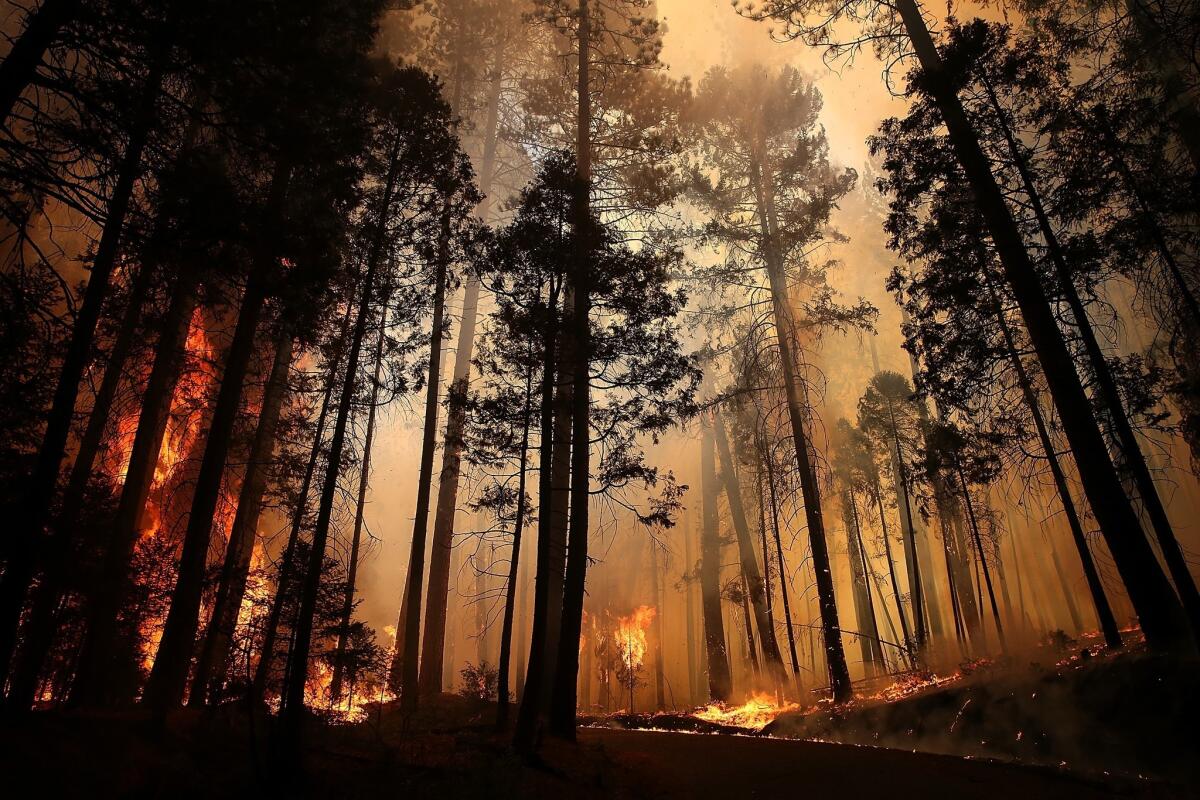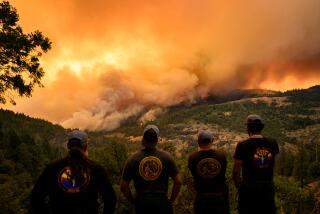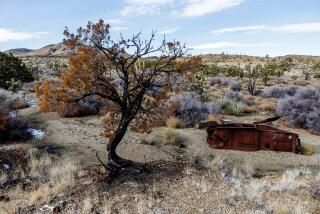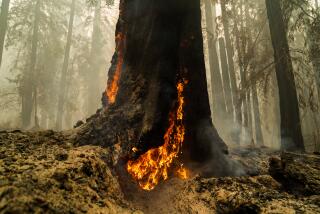Yosemite’s burned areas are alive

It was entirely predictable. Even before the ashes have cooled on the 257,000-acre Rim fire in and around Yosemite this year, the timber industry and its allies in Congress were using the fire as an excuse for suspending environmental laws and expanding logging operations on federal land.
“The Yosemite Rim fire is a tragedy that has destroyed 400 square miles of our forests,” said Rep. Tom McClintock (R-Elk Grove) in announcing a bill he introduced late last month that would expedite massive taxpayer-subsidized clear-cutting on federal public lands in the fire area. “If any good can come of this tragedy, it would be the timely salvage of fire-killed timber that could provide employment to local mills and desperately needed economic activity to mountain communities.”
But McClintock’s reasoning is flawed. Massive clear-cutting now would inflict significant damage and negate the many ecological benefits that fire brings.
Ecologists agree that the post-fire habitat created by patches of high-intensity fire, known as “snag forest habitat,” is one of the most ecologically important of all forest habitat types, and it supports levels of native biodiversity and wildlife abundance equal to or greater than unburned old-growth forest. Moreover, snag forest habitat is even rarer than old-growth forest, and is more threatened by commercial logging than any other forest type.
Will the land look the same as it did before the fire? Of course not. But post-fire snag forest habitat is important to the rejuvenation of the area’s ecology, which will begin next spring. Standing dead trees, or “snags,” provide habitat for the larvae of native wood-boring beetles, upon which woodpeckers depend for food. The woodpeckers dig out nest cavities in the dead trees — a new one each year — creating homes for many other cavity-nesting species, like the mountain bluebird, that cannot create their own nest holes. The native flowering shrubs that germinate after high-intensity fire attract an abundance of flying insects, including bees, butterflies, moths and dragonflies, and this provides food for many bat and bird species, especially flycatchers. Raptors such as goshawks and spotted owls actively hunt in snag forest habitat because of the high density of small mammal prey in the native shrubs and downed logs. Deer happily browse on the natural post-fire conifer regeneration and shrubs, and bears feed on the rich crop of berries in snag forest habitat.
The black-backed woodpecker, in particular, depends on large patches high-intensity fire occurring in areas of dense, mature conifer forest — generally requiring at least 200 to 300 acres per pair. Because of a dramatic loss of snag forest habitat from decades of fire suppression, post-fire clear-cutting and intensive forest “thinning” operations, in April the U.S. Fish and Wildlife Service issued a determination that the subspecies of the black-backed woodpecker that lives in the Sierra Nevada and eastern Oregon Cascades may need to be listed under the Endangered Species Act to prevent extinction. This species is a management indicator species, or bellwether, for a much larger group of wildlife species that depends upon snag forest habitat — a canary in the coal mine, so to speak.
Despite many dozens of scientific studies establishing that high-intensity fire patches create perhaps the best wildlife habitat in the forest, the timber industry, its allies in Congress and the U.S. Forest Service continue to promote aggressive post-fire logging. An obscure law known as the Salvage Sale Fund allows the U.S. Forest Service to keep 100% of the revenue from selling public timber to logging corporations after fires, creating a powerful perverse incentive to ignore current science, shortcut environmental laws and promote huge clear-cutting operations on federal public lands after fires.
Forest fires currently burn mostly at low and moderate intensity, and the Rim fire is no exception, with only 30% of the conifer forest experiencing high-intensity fire on federal lands. And even in high-intensity fire areas within forests, the largest conifers often survive and help regenerate new trees. But according to numerous scientific studies, the highest wildlife abundance and species richness are often found in the spots that burned the hottest, where it takes regenerating conifers the longest amount of time to replace the colorful native flowering shrubs and standing snags. Though misunderstood, and unfairly maligned by Rep. McClintock, this post-fire habitat is both natural and ecologically desirable.
The question is this: Can we, as a society, collectively take a breath and consider the new ecological science, or will we once again let fear, ignorance and greedy opportunism dictate forest management? The survival of the black-backed woodpecker depends on the answer.
Chad Hanson is a forest and fire ecologist with the John Muir Project of Earth Island Institute. He is based in the San Bernardino mountains. https://www.johnmuirproject.org.
More to Read
A cure for the common opinion
Get thought-provoking perspectives with our weekly newsletter.
You may occasionally receive promotional content from the Los Angeles Times.










